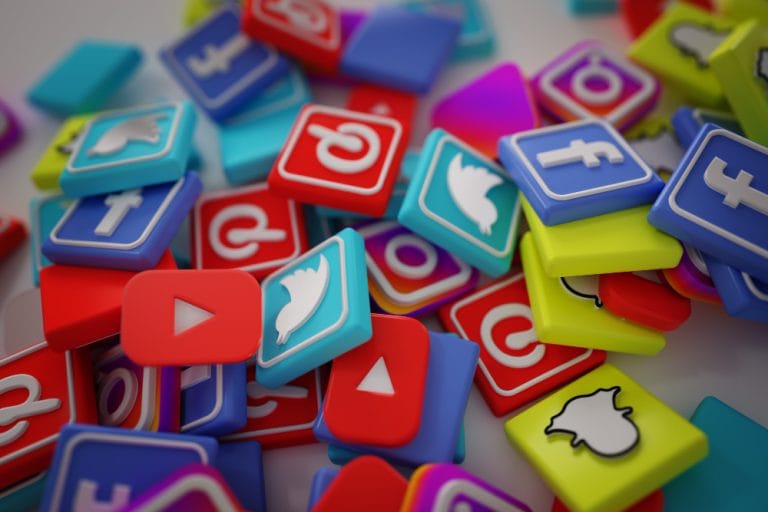Introduction
The last decade actually heralded the age of social media marketing. A decade later, with technological innovation, changing user behavior, and endless quests for innovation, it is bound to have changed dramatically all the way up to 2025. The enumeration of the said trends that will basically change the landscape for social media marketing is definitely the main feature of said article, with the objective to let businesses know what to focus on at any time, so they stay ahead.
Response to AI and Machine Learning
The new age of artificial intelligence and machine learning will automate social media marketing. By the year 2025, the technology will not exist without strategies put forth in response to the consumers’ behavior, such as creating customized content or optimizing targeting ads.
AI-Powered Analytics: Artificial intelligence will lead marketers to delve into deeper insights regarding audience preference and behavior through advanced analytics. Predictive analytics with AI can go deeper into trend prediction, real-time optimization of campaigns, and a realignment approach toward a data-driven decision in ROI management.
Although we already have GPT-4, as an AI-powered text, image, and video content creator and curator that can churn out what a human produces, the automation of feeds will be undertaken by AI algorithms in a very personalized way, aligning to users’ interests and accentuating user engagement and level of interest.
Improved Customer Service: AI-driven next-generation chatbots will provide instant, all-day, and personalized customer service. The products from the chatbot answer any question on the charge, from easiest to most complicated, hence improving user satisfaction and minimizing the response time.
Privacy and Data Security
The consumer database protection will literally be at the top of the agenda for social media platforms as more and more concerns arise regarding both privacy and security. One will have to bring in a felt need for stringent legislation and beefed–up security measures. Marketers have to fall back on transparent data practices that are sure to comply with existing privacy laws in building up and maintaining trust among consumers.
Regulatory Compliance Governments all across the globe are coming up with more stringent data protection acts.
For example, GDPR in Europe and CCPA in California are changing the terms of clarity under which businesses are supposed to abate concerning their data collection, usage, and storing practices.
User Control of Data: Coming will be a new level of empowerment to take control of the data via platforms that enable the responsible management of permissions while simultaneously observing how the data is used. Driving this momentum would be an increased demand for stronger brand communications regarding data policies and practices back to the consumer.
Data Security Practices: There shall be robust security practices in place, which include having encryption and security audits at regular intervals. A brand shall have to be highly comforting in terms of user data protection; any mishandling herein may be avoided to prevent breaches and any other related issue.
Augmented Reality and Virtual Reality Full racial profiling
In 2025, AR and VR are expected to throng their way into the mainstream of social media marketing. Brands would be able to use AR for interactive advertisements so that customers can experience the use of its products virtually before actually getting tangible access to them. This will help customers have a very immersive brand experience through having a virtual tour of the store or anything else with some elite event; this will help get more customer attraction towards a brand.
AR advertising will be able to drive interaction with users, hence engagement. It will enable consumers to visualize products just by augmented reality and to try clothing or furniture at home, hence making much more informed purchase decisions.
VR Experiences: This will allow brands to impart varied and, thereby, immersive experiences with virtual reality. For example, a tourist company may offer a virtual tour of places to the consumer, while an event organizer might conduct virtual concerts so consumers get a taste of the brand.
Social Media Integration: With augmented reality and virtual reality features, social media sites will have easy integration for brands, which would help share the contents that can be created through experiences achieved via immersion within a social environment. It acts as a trigger to drive user engagement and provides newer avenues for creative marketing campaigns.
Social Commerce
Social commerce will have a more pronounced influence and, step by step, do away with the fine lines that evoke social media from e-commerce. Shopping has already been fitted into Instagram, Facebook, TikTok platforms, and many others. By 2025, much more will be built toward seamless shopping. As this takes place, brands will optimize their social appearances from the standpoint of direct buying, mainly influenced by the power of influencers and user-generated content.
Unified shopping features: This is where most of all the in-app shopping features are going to be integrated. Now, one will be able to window shop, buy, and give a review, all inside an app without leaving it. The functionalities that are going to be included are shoppable posts, live shopping events, and in-app checkout.
Influencer-led commerce: Social commerce is going to be driven by influencers, with sales and credibility being the measure of the outcome of real recommendations or pitching of products by trusted influencers. Clearly, brands will keep on upping their game iteratively to provide more compelling shopping experiences.
Content Created by Users: Asking the prospect to share their journey and testimonials on social media will become an impactful marketing force. It’s not just user-generated content; it also involves social proof, activating the community while creating brand loyalty.
Video Will Be King
This newly trending medium of video content and the time spent will only grow from here with the rapidly growing short-form videos, live streaming, and ephemeral content already fronted by TikTok, Instagram Reels, and YouTube Shorts. Hence, come up with relevant, high-quality, captivating video content that can be shared and engaged with.
It’s obvious: a short video is here to stay. Bite-sized videos, anyway, are autonomously made for holding regard for a snap and getting information across. So, in terms of brand innovation, there’s a need to try formats like challenges or tutorials and go with the behind-the-scenes content.
Live Streaming: This option enables audience engagement in a real-time manner and so feels truly organic. It multiplies, by tens, if not hundreds, the chances of better engagement. Live streams can be used for creating urgency and feelings of exclusivity in a product launch, during question-and-answer sessions, or simply hosting an event online.
Ephemeral Content: With the ever-increasing popularity of Instagram and Snapchat stories, it doesn’t seem like automatically disappearing content is going anywhere except up. This format is allowing users to stay engaged on an almost daily basis and to get that irresistible, unmissable, fear-of-missing-out experience. Brands are going to leverage Ephemeral content for flash-in-a-tank promotions or behind-the-scenes updates.
While the big channels such as Facebook, Instagram, and Twitter are likely to remain, one realizes that now they will lean more in the direction of niche social media platforms. It is going to facilitate specific interests and communities, thus allowing excellent opportunities for brands that inculcate highly targeted audiences. The marketer will have to gear up and use this set of new existences in the market to reach out to another set of target demographics.
Target Audiences: On the other side, niche platforms will attract people with very particular interests, thus focusing and engaging an audience. This may further help brands to have content and messaging that resonates with the community, once again translating to high conversion and engagement rates.
Real Engagement: Smaller platforms provide a different type of community and authenticity that proves very useful for a brand interested in building real-time engagement. The relationship built between the brand and the community has led to increases in brand loyalty components, including trust.
Test emerging platforms: This would be really important in getting ahead of trends—finding and testing emerging platforms. Getting in at the very beginning will give one an edge on their competitors and build a huge following before it gets too saturated.
Rise of Focus on Authenticity and Transparency
They seek more truth and pari. The message is coming from companies that deal with it. This trend will only get further aggravated, stressed to the hilt in 2020, and hold strong until 2025. It won’t be any brand monologue; it will be, to the contrary, real interaction, user-generated. content and actions communicated transparently, in a bid to try and gain trust and build a long-term relationship with their audience.
It wants to interact with the customers for real. It wants to have real conversations, not the transactional kind of engagement that most brands do. Replying back to comments and concerns and appreciating a customer for their loyalty can really make a firm relationship—a sturdy one.
It has been a huge drive toward authenticity, urging customers to engage in the sharing of the experience or story related to the brand. Not only is it some form of social proof by posting user-generated content on official channels, it definitely makes that customer feel special within that brand.
Transparent Communication: There should be transparency in business practice, the origin of the products, and values in the corporation. As transparency builds trust, therefore consumers are for those brands and businesses whose goals and values align with what consumers believe in.
Implement blockchain technology.
Such blockchain technology would find its place in social media marketing, most probably in improving or increasing transparency both in and from advertising. This is likely to fight ad fraud and assure authenticity in influencer partnerships by delivering data with proofs on the ad performance. Hence, marketers themselves should be aware of the development of the blockchain and gear up to apply it in any potential approach.
Ad Fraud Prevention: Blockchain can help create transparent, immutable ledger records of ad transactions, hence reducing the possibilities of fraud. This will, therefore, provide some proof to advertisers that their advertisement has been accessed by real users and that their budgets have been well spent.
Influencer marketing: Blockchain can enable readily available, verifiable data on how an influencer is performing, guaranteeing metrics on their follower count and engagement rate. This brings transparency, which will help in making very informed decisions while choosing a partner and measuring ROI.
Data Privacy: The decentralized nature of blockchain can provide increased security and privacy for the data of any user. Empowerment over personal information will even be increased on the users’ side, with the brands being able to exhibit their commitment to the cause of user data protection.
Personalization and hyper-targeting
Personalization will be right at the frontline as one of the keys to allowing successful social media marketing by the year 2025. Backed by AI, data analytics shall provide a way in which brands will have conversations through super-targeted content and ads in line with the taste of each individual and their behavior. Personalization means increased experience and hence more user engagement, leading to conversions.
Insight driven by data. The brands are able to collect data from the touchpoints and analyze it, from which one will understand the preferences and behaviors of the user. They will be able to realize that whatever data is given defines further the preference, needs, and behavior of the user to invest in areas that will be more relevant and effective in action through the use of content and ad strategies.
Dynamic content is generated in real-time from the input of a user and created in such a way that it delivers personalized recommendations, exclusive offers, or special messages that may be eye-catching for users, thus increasing conversions.
AI-Powered Targeting: AI algorithms have the capability to identify patterns and trends, able to dive into large and disparate data. That, therefore, helps brands get in front of the audience that most needs to hear a brand’s right message at the right time through advertising hyper-targeting for maximum campaign impact through all the right touchpoints.
Evolution of Influencer Marketing
This will go a long way in evolving influencer marketing into long-term partnerships and micro-influencers. The long-term goal should be to move brands away from counting followers to a metric of authenticity and engagement—that is, influencers who actually can connect with their audience. Metrics and analytics tools will continuously rise for the influencers, containing in-depth insights about the effectiveness of the campaign.
Long-term relationships: The environments will soon shift from having a one-time collaboration to long-term partnerships. By using this approach, one definitely will build up the trust and accumulate credibility—not for nothing do influencers become genuine brand advocates with time.
Micro-Influencers: Owing to the lesser number of followers but mostly highly engaged, these people will take over the game. Most of them usually tend to be far closer to their audience; therefore, this might lead to higher engagement rates and thus a higher rate of conversation. Micro-influencers get brands deeper into some specific niche communities.
Advanced Analytics: These below-listed tools and metrics allow us to go one step ahead in giving a detailed description of influencer performance by quantitatively measuring engagement quality, audience sentiment, and ROI for brands. The learnings would be helpful in optimizing influencer marketing strategies.
Impact of 5G Technology
With much faster internet speed and connectivity, 5G technology will bring tectonic change to social media marketing faces. Thus, it is going to revolutionize the user experience with the super-easy flow of high-quality video content and making real-time interactions substantially convenient.
High-quality video: streaming high-quality video—4K, for that matter—will be much easier with 5G. Experience a serious enhancement. This is going to enable brands to use the technology to allow live streaming with high resolutions, virtual events, and interactivities.
Real-time engagement will result in much deeper real-time engagements, such as live chatting while streaming any kind of event or answering user questions. This immediacy will bring better-engaged users and, in turn, more dynamic and interactive brand experiences.
The combination of low-latencies and 5G-larieties, combined with time, AR, and VR technologies, will be associated with creating a brand-new immersive, responsive AR/VR experience. This, in some sense, will keep blurring the line between the physical and the digital world.
Social Media as a Channel for Customer Service
The more the social media websites advance, the more their usage will grow as major channels for customer service. This means that customer service functions must be embedded in social media strategies in such a way that any query and problem of the customers gets addressed without any delays and in an equitable manner.
Support Channels: The brands would receive real-time channels of customer interaction on the social media site with trained agents manning them round the clock to help handle service requisitions, and so customers would have a direct route for help.
The platform supports proactive engagement by brands in monitoring mentions and feedback across social media, engaging customers, acting against complaints before they become scandals, and improving satisfaction with compelling evidence of care taken toward better customer service.
Integrated Tools: Tools will integrate customer service features such as ticketing systems and CRM integration tools with the social media management tools so that the ways of handling and responding to the customer inquiries will be easier across all platforms.
Conclusion
It is going to be really dynamic and very new by 2025, and hence the future of social media marketing is changing with technologies and audience expectations. Businesses, therefore, need to get prepared to tap into such big dramatic trends as AI, privacy AR/VR, social commerce, video content, niche platforms, authenticity, blockchain, personalization, influencer marketing, 5G technology, and integration into customer service, henceforth allowing the brand simply to devise more engaging, effective, and trustworthy social media marketing strategies that will go through and never deprecate within the ever-revolving digital environment.




